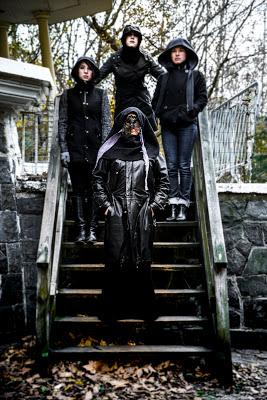
Photo (c) Cantanti Project/Lucas Godlewski
It is a truth universally acknowledged that claimants to the title of First Opera are many, though Monteverdi's Orfeo usually makes it into the textbooks. This weekend, NYC will get the Cantanti Project's performance of the earliest extant operatic score. As a historian, I like the phrase "first extant operatic score": it fills the mouth and rolls off the tongue. Not only is Giulio Caccini's Euridice thus a landmark in the hectically productive years of the early seventeenth century (it was published in 1600), it is a highly self-conscious manifesto about the power of music.
Conductor Dylan Sauerwald, who will conduct the performances, has argued that, although "lines in music history are usually blurry... the baroque was an explosion." Not only was Caccini visibly influential in this creative explosion, he was determined to be. His Euridice, written to a libretto also used by Peri, was on the only possible topic for a composer seeking to recapture the power harnessed by the ancient Greeks -- that of music to create harmony, to inspire madness, and indeed to overcome death itself. From the 1580s onwards, the philosophers and artists of Florentine salons had been having vigorous debates about what music should do, and what music could be -- if only their own age could recapture the genius of the ancients. I confess that, even as a habitual operagoer who grew up on Greek mythology as retold by Bulfinch and Hamilton, I observed the early operatic fascination with Orpheus and Euridice without having the penny drop: that it was chosen precisely because it was the narrative of how skillful poetry, skillfully set against music, could break the heart and change the world.
Caccini's goal, of course -- besides representing the power of music that could undo death -- was to approach the bardic genius of Homer, and the lofty goals of Aristotle's rhetoric, finding for every situation the exactly suited words. The resulting drama would be, ideally, both naturalistic and able to move gods and mortals. Growing out of pieces like those contained in Caccini's own Le Nuove Musiche, constructing such a drama on such a scale was a novelty with high stakes and no conventions. The score explaining how this miracle was to be achieved is of only two staves. I love this, too: that the necessarily creative act of performance as interpretation becomes visible here, as an integral part of opera's nearly-impossible dream. A parenthetical observation on this vocabulary of creation: the idea that mortals could ourselves create, that this was not an act solely divine, is one that appears in language only from the late fifteenth century onwards.
But back to the turn of the seventeenth century, and Caccini's opera. The goal of Euridice (recorded here) was to represent the glorious unpredictability of speech, from casual conversation to elevated recit. The continuo and the voice, thus, would become interdependent, relying on ideas that were still in the process of codification. In the Cantanti Project's run, the improvised textures of the continuo will be created by a harpsichord, lute, baroque harp, viola da gamba, and theorbo. That is a litany to bring delight to the heart of any music nerd, its hypnotic cadences magical as those of the Queen of Sheba's gold and silver, ivory, apes, and peacocks. And with this collaboration, once again, Orfeo will descend to hell and demand radical empathy, demand that death yield to love that is its equal: "Lagrimate al mio pianto, ombre d'inferno" -- "weep, weep for my lament, shades of hell." It is an expression that can be interpreted as sublime confidence or simple, naked desire, borne of chilling need. In score and performance, as well as in the subject of the drama, Euridice is at every level about what Sauerwald has called "the transformative role of the performer." Tickets are available here.

